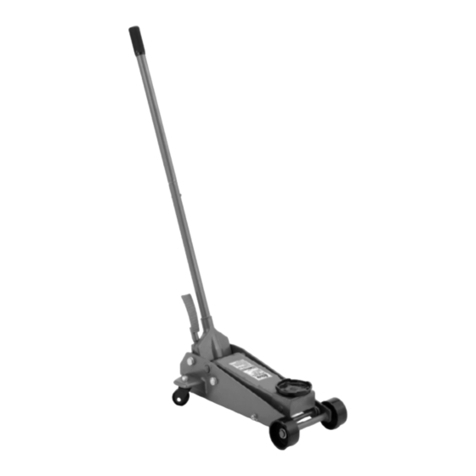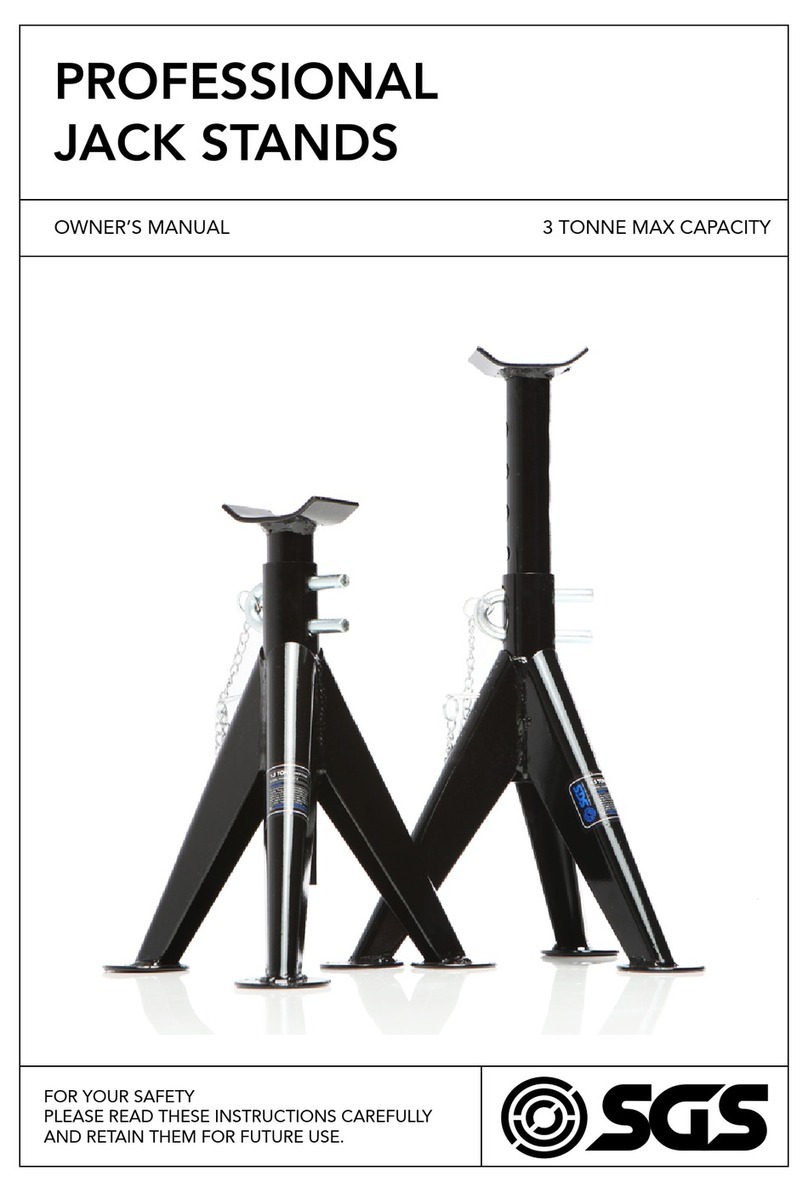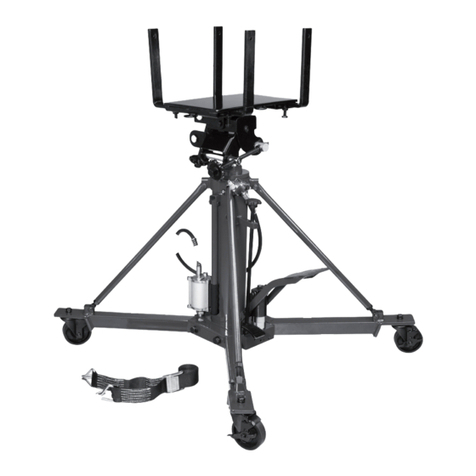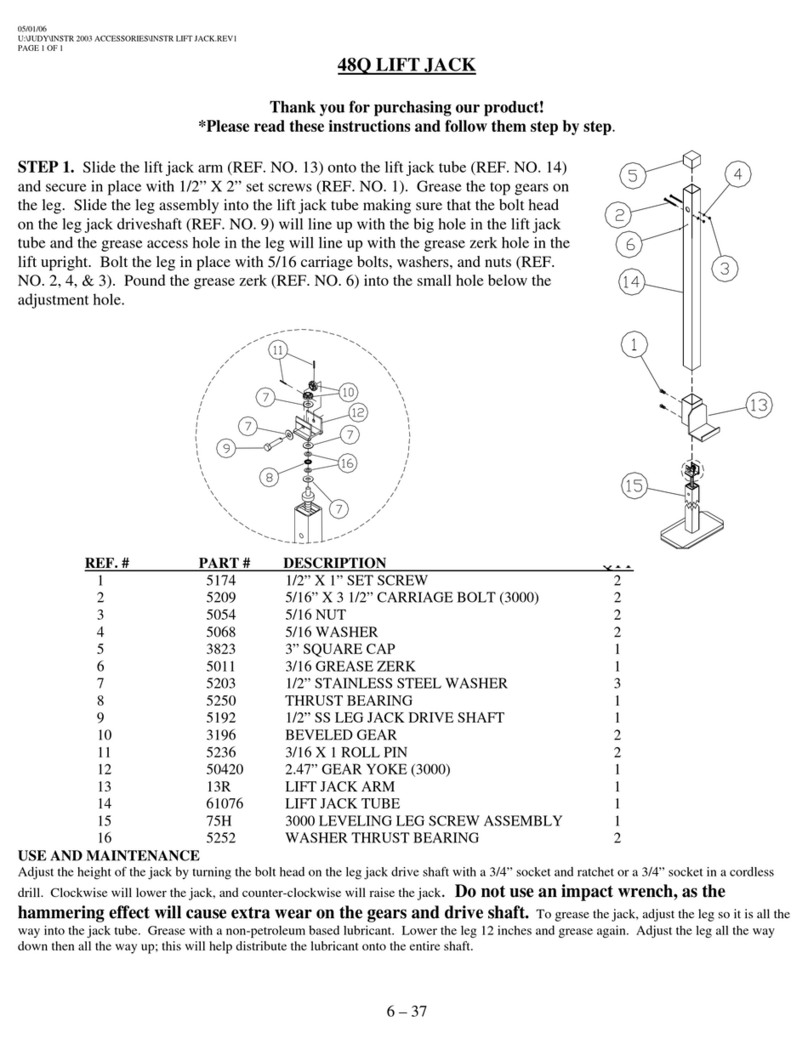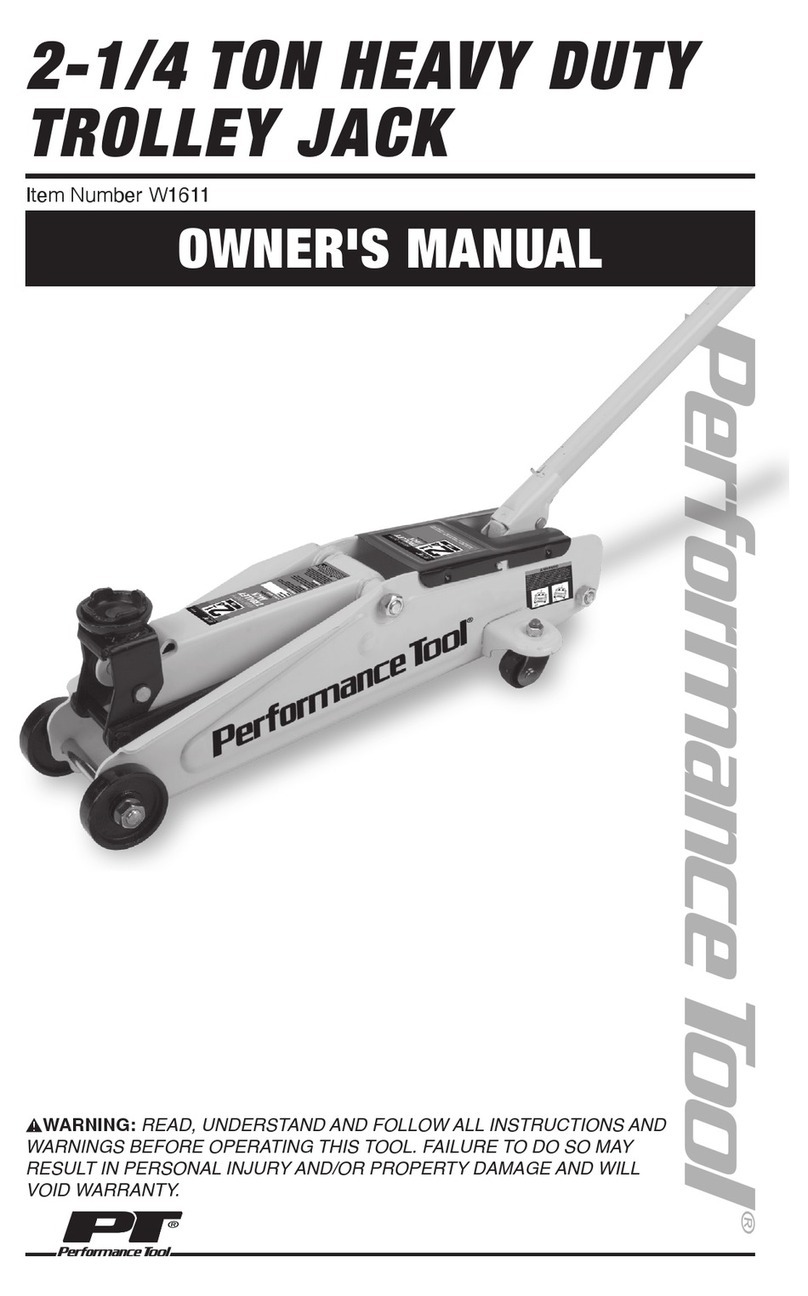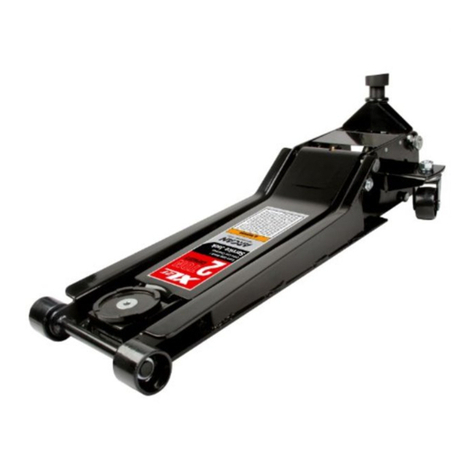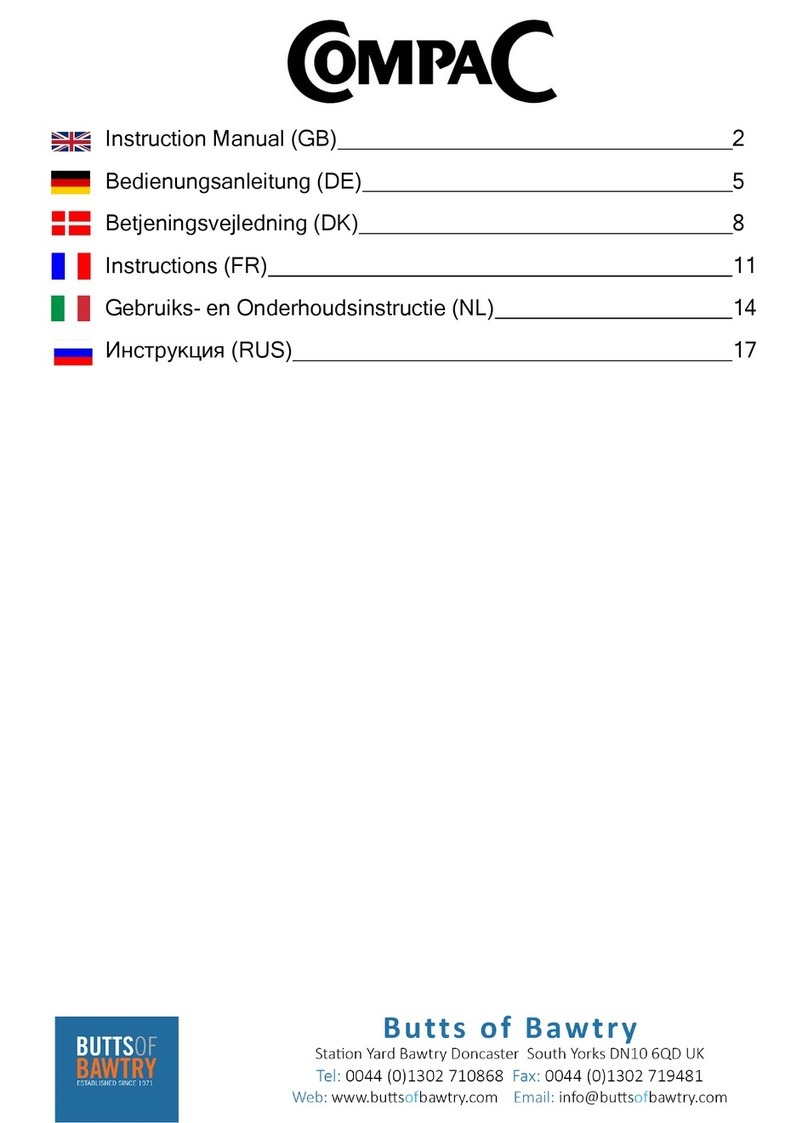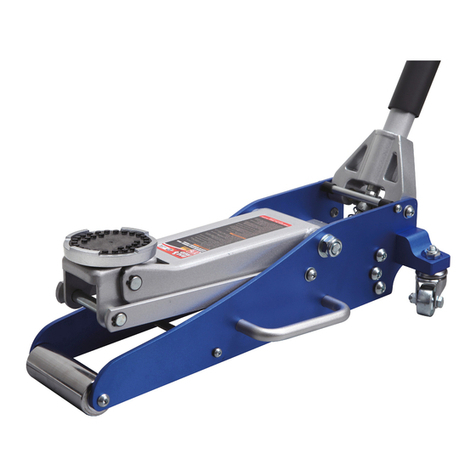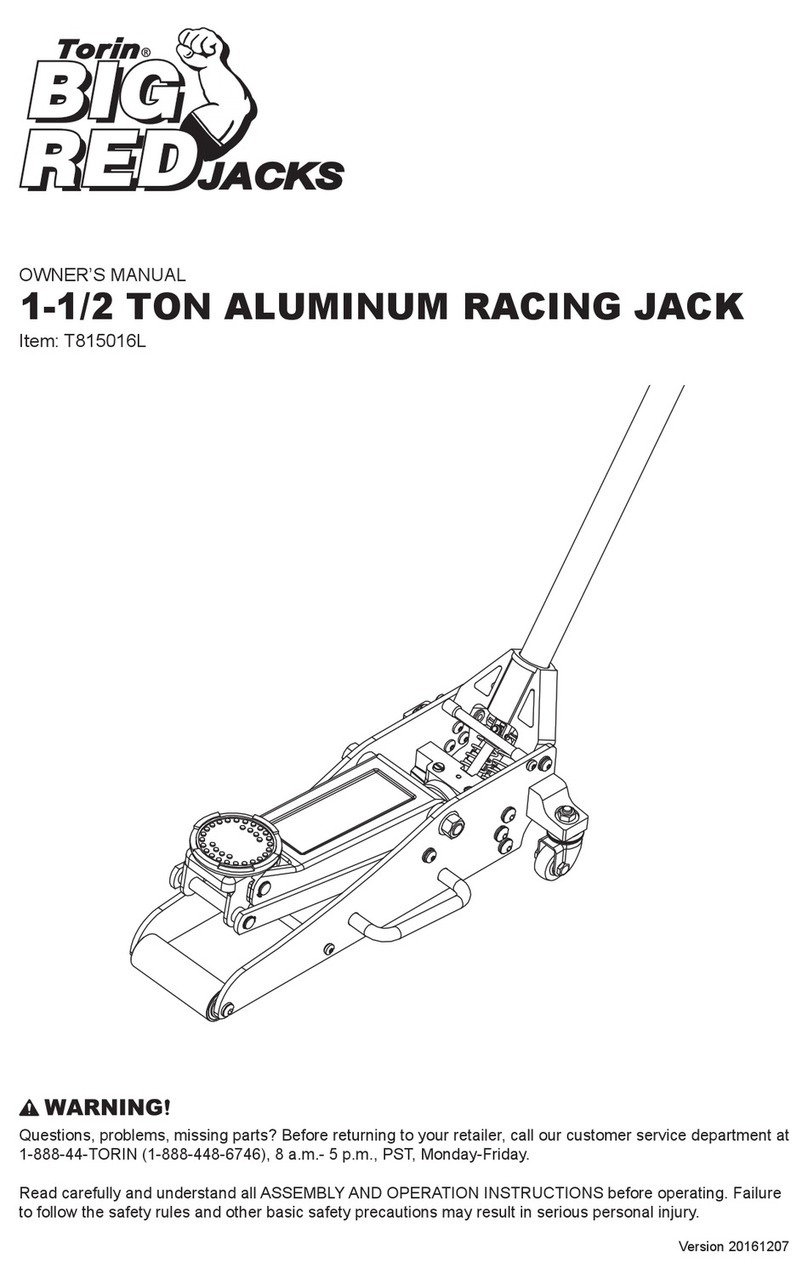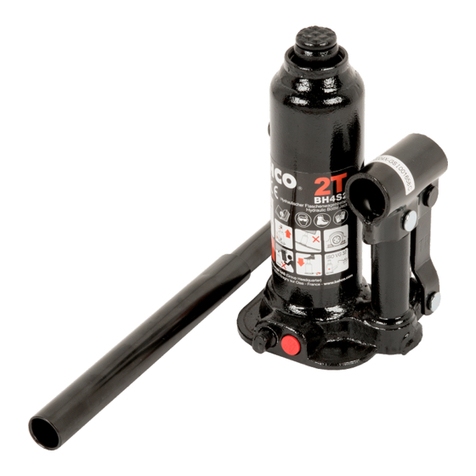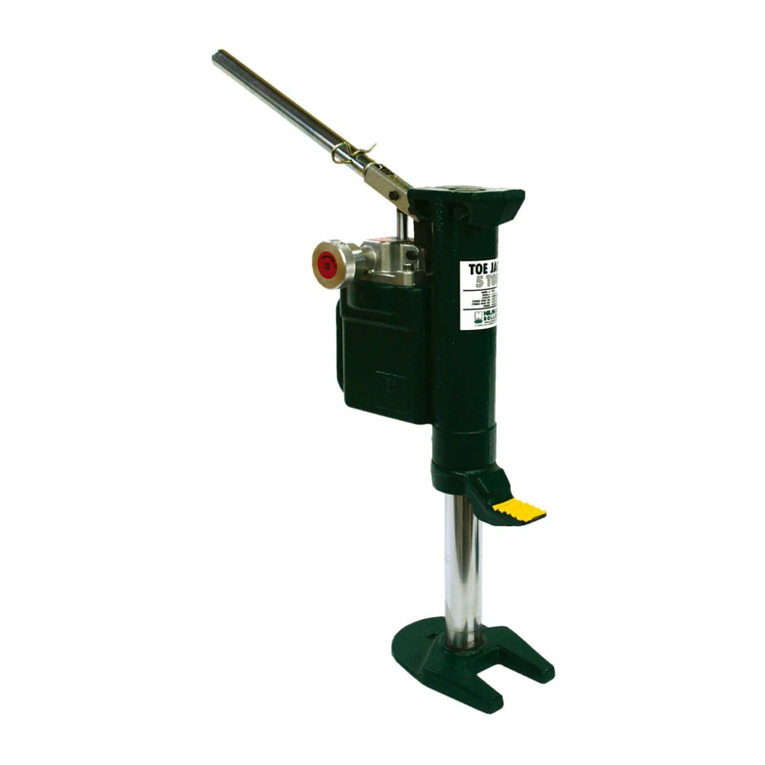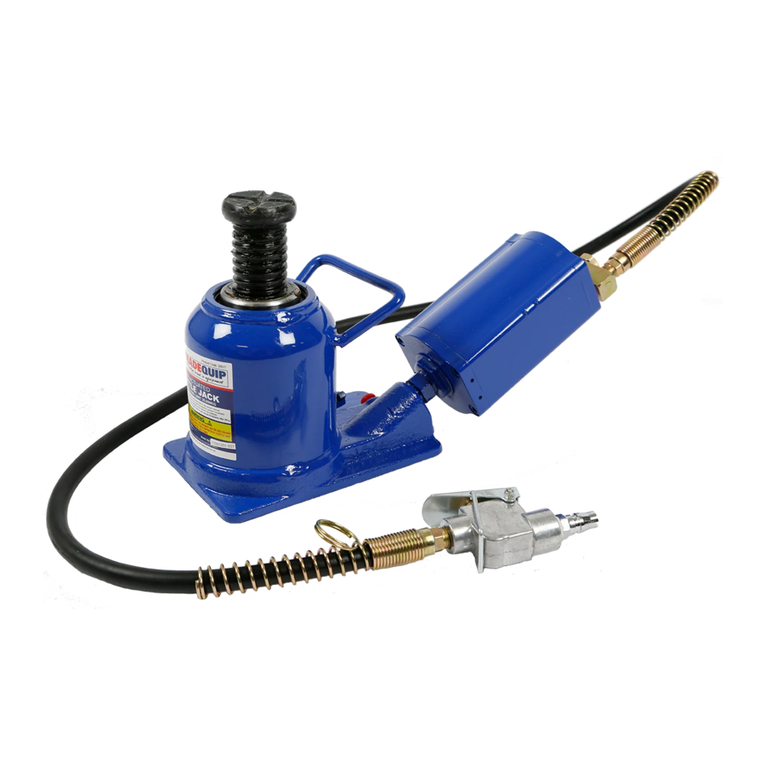HILO JACK-4N User manual

USRESTAURANT® RESERVES THE RIGHT TO CHANGE SPECIFICATIONS WITHOUT NOTICE
USER MANUAL
MANUAL PALLET JACK
MODEL: JACK-4N, JACK-4S
USR Brands, Inc.
Phone: 800-764-1172 | www.usrestaurant.com | sales@usrestaurant.com

USRESTAURANT® RESERVES THE RIGHT TO CHANGE SPECIFICATIONS WITHOUT NOTICE
Contents
1. Operation Manual
1.1 Range of Application
1.2 Operating Instruction
1.3 Safety Precautions
2. Description of truck
2.1 Applied Range
2.2 Illustration of Assembly Units & Operating Conditions
3. Using Functions
3.1 Test Run
3.2 Control Handle Knob Adjustment
3.3 Safe Parking
4.Safe Operation
4.1 Inspection of Hydraulic Oil
4.2 Air Extraction
4.3 Daily Maintenance
4.4 Possible Faults and trouble shooting
1. Operation Manual
1.1 Range of Application
Truck should be operated, used and maintained in accordance
with this manual. Other operation, which are not listed in this
manual, may cause hazards to people and truck, and may lead
to property loss. Please carefully read the nameplate first to
make sure the loading weight doesn’t exceed the truck’s
capacity. Overload and unbalanced load should be avoided.
Flammable explosive environment may cause explosion.
1.2 Operating Instruction
The truck can only be operated by staff who has been trained
well, has obtained a diver license, knows how to deal with
loading, is clear about the operating instructions and has
grasped operating skills.All the users should carefully read and
understand the content of this manual.
Failure to comply with the instructions will result in loosing
warranty. These rules apply equally to products that have been
unlawful exported without manufacture’s permission by
customers ( or third party ).
1.3 Safety Precautions
User should be responsible to the truck’s useful life. It is
forbidden to load people and let then stand on the forks to side.
When discover damage and other flaw, user should
immediately send report to supervisor.

USRESTAURANT® RESERVES THE RIGHT TO CHANGE SPECIFICATIONS WITHOUT NOTICE
2 Description of truck
2.1 Applied Range
The truck can lift and carry goods on level ground by using fork.
It can also carry open type tray and transverse tray. User can
obtain the carrying capacity from the truck’s nameplate.
2.2 Illustration of Assembly Units & Operating
Conditions
3. Using Functions
3.1 Test Run
Loading goods at test run should be operated in the safe area
with staff only. The gravity center of the goods should be
positioned in the middle of the two forks. Do not put goods at
rear of the fork.The carrying capacity can be maximized when
weight is evenly distributed.
3.2 Control Handle Knob Adjustment
1. Handle
2. Pin roll
3. Oil pump
4. Big wheel
5. Fork frame
Correct
Wrong

USRESTAURANT® RESERVES THE RIGHT TO CHANGE SPECIFICATIONS WITHOUT NOTICE
The control handle knob has three positions (up, middle, down).
Up Push the control handle knob to the lower position, then
bob up and down the handle to lift goods on fork.
Middle Keep the forklift in the middle position, then the fork will
not lift or decent. This mode is used to pull the truck.
Down Pull and keep the control handle knob to the upper
position, then the fork will descend. Release the control handle
knob, it will automatically get back to the middle position.
Lift Make sure the fork is fully into the bottom of the goods
before lifting the goods. When everything ready, push the
control handle knob to the lower position and rock the handle to
lift goods to the wanted height.
Descend When pull the control handle knob up, the fork will
descend. Release the control handle knob, it will automatically
get back to the middle position, and the fork will stop descend.
When moving truck, the control handle knob should be kept in
the middle position.
3.3 Safe Parking
Do not park the truck on an inclined plane. The truck forks
should be on the lowest position while parking.Wheels should
be fixed and fencing should be used to protect the truck when
using other vehicle to transport it.
4. Safe Operation
4.1 Inspection of Hydraulic Oil
Check the oil mass every six months. The total capacity is
about 0.3 L. Hydraulic oil type: L-HV46. Use under -20℃ ~
+40℃.
4.2 Air Extraction
Air will easily get into the oil tank because of transportation and
inversion. This will lead to the failure of lifting the fork when
push the control handle knob to the lower position. Method of
air extraction: Pull and keep the control handle knob to the
upper position, then rock the handle for several times.
4.3 Daily Maintenance
Daily maintenance can improve the truck’s service life.
Specially pay attention to the place between wheels and axis.
Make sure there is no yarn or other rags in order to keep all
wheels running with handiness. When the truck does not work,
make sure that the truck forks are on the lowest position.
Lowering
Netural gear
Raising

USRESTAURANT® RESERVES THE RIGHT TO CHANGE SPECIFICATIONS WITHOUT NOTICE
4.4 Possible Faults and trouble shooting
Use the method listed in the following table (table 4.4). If the
fault can not be removed, please contact the supplier for an
advanced checking. The maintenance can only be done by
specialized persons. Person without specialized training
shouldn’t assemble and disassemble the truck.
Table 4.4 Possible Faults and trouble shooting
Fault
Description
Reason
Method
1
Fork cannot
reach the
wanted
height
·Lacking of hydraulic oil.
·Add hydraulic oil.
2
Fork cannot
rise
·Hydraulic oil is not pure.
·The relief valve is opened
because the adjustment nut
is too high or the screw is
too close.
·Air in the hydraulic oil.
·Change hydraulic oil.
·Readjust the position of
the adjustment nut or the
adjustment screw.
·Bob up and down the
handle to extract the air.
3
Fork cannot
descend
·The large piston or the
pump body is damaged
because of the unevenly
distributed weight on the fork
or overloading.
·The fork has been kept in
high position for a long time ,
and the large piston is
rusted.
·The adjustment nut or the
adjustment screw is in an
incorrect position.
·Change the large piston
or the pump body.
·Keep the fork in the
minimum height when
work is done. Pay attention
to lubricate the piston
lever.
·Readjust the position of the
adjustment nut or the
adjustment screw.
4
Oil leak
·Aging or damaging of
sealing element.
·Some elements are
crazed.
·Change the damaged
elements.
5
Fork
descend
without
operation
·The relief valve cannot
shut because of impure
hydraulic oil.
·Some of the hydraulic
system elements are
damaged or crazed.
·Air in the hydraulic oil.
·Aging or damaging of
sealing element.
·The adjustment nut or the
adjustment screw is in an
incorrect position.
·Change hydraulic oil.
·Check and change the
damaged elements.
·Extract thee air.
·Change the sealing
elements.
·Readjust the position of
the adjustment nut or the
adjustment screw.
This manual suits for next models
1
Table of contents

